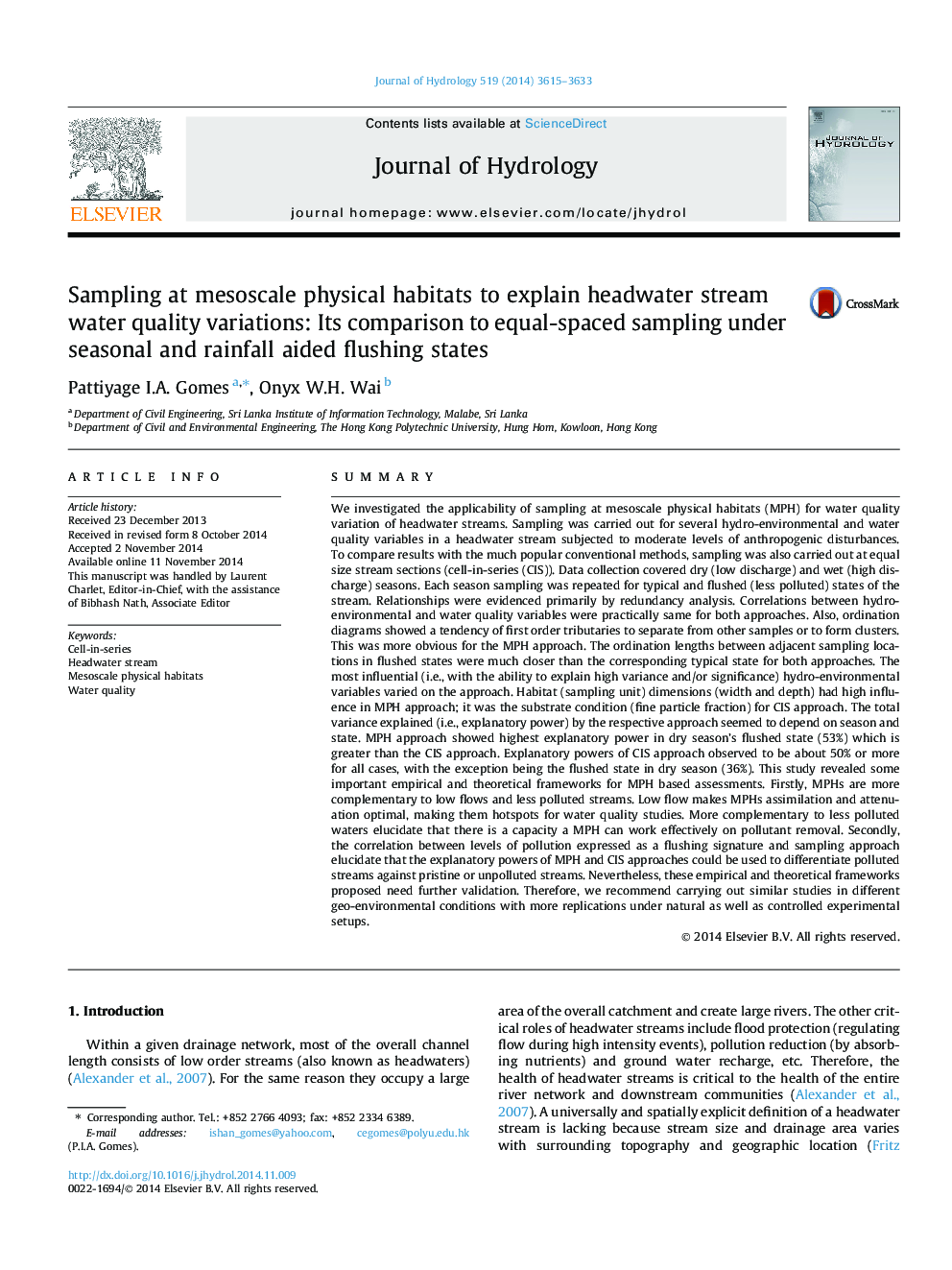| Article ID | Journal | Published Year | Pages | File Type |
|---|---|---|---|---|
| 6412308 | Journal of Hydrology | 2014 | 19 Pages |
â¢Scale is an issue in conventional, cell-in-series (CIS) sampling at equal distances.â¢Stream water quality was assessed using mesoscale physical habitats (MPH) and CIS.â¢MPH and CIS showed different response in explanatory power base on season and state.â¢MPH seemed to be advantageous in shallow streams, especially after a flushing event.
SummaryWe investigated the applicability of sampling at mesoscale physical habitats (MPH) for water quality variation of headwater streams. Sampling was carried out for several hydro-environmental and water quality variables in a headwater stream subjected to moderate levels of anthropogenic disturbances. To compare results with the much popular conventional methods, sampling was also carried out at equal size stream sections (cell-in-series (CIS)). Data collection covered dry (low discharge) and wet (high discharge) seasons. Each season sampling was repeated for typical and flushed (less polluted) states of the stream. Relationships were evidenced primarily by redundancy analysis. Correlations between hydro-environmental and water quality variables were practically same for both approaches. Also, ordination diagrams showed a tendency of first order tributaries to separate from other samples or to form clusters. This was more obvious for the MPH approach. The ordination lengths between adjacent sampling locations in flushed states were much closer than the corresponding typical state for both approaches. The most influential (i.e., with the ability to explain high variance and/or significance) hydro-environmental variables varied on the approach. Habitat (sampling unit) dimensions (width and depth) had high influence in MPH approach; it was the substrate condition (fine particle fraction) for CIS approach. The total variance explained (i.e., explanatory power) by the respective approach seemed to depend on season and state. MPH approach showed highest explanatory power in dry season's flushed state (53%) which is greater than the CIS approach. Explanatory powers of CIS approach observed to be about 50% or more for all cases, with the exception being the flushed state in dry season (36%). This study revealed some important empirical and theoretical frameworks for MPH based assessments. Firstly, MPHs are more complementary to low flows and less polluted streams. Low flow makes MPHs assimilation and attenuation optimal, making them hotspots for water quality studies. More complementary to less polluted waters elucidate that there is a capacity a MPH can work effectively on pollutant removal. Secondly, the correlation between levels of pollution expressed as a flushing signature and sampling approach elucidate that the explanatory powers of MPH and CIS approaches could be used to differentiate polluted streams against pristine or unpolluted streams. Nevertheless, these empirical and theoretical frameworks proposed need further validation. Therefore, we recommend carrying out similar studies in different geo-environmental conditions with more replications under natural as well as controlled experimental setups.
